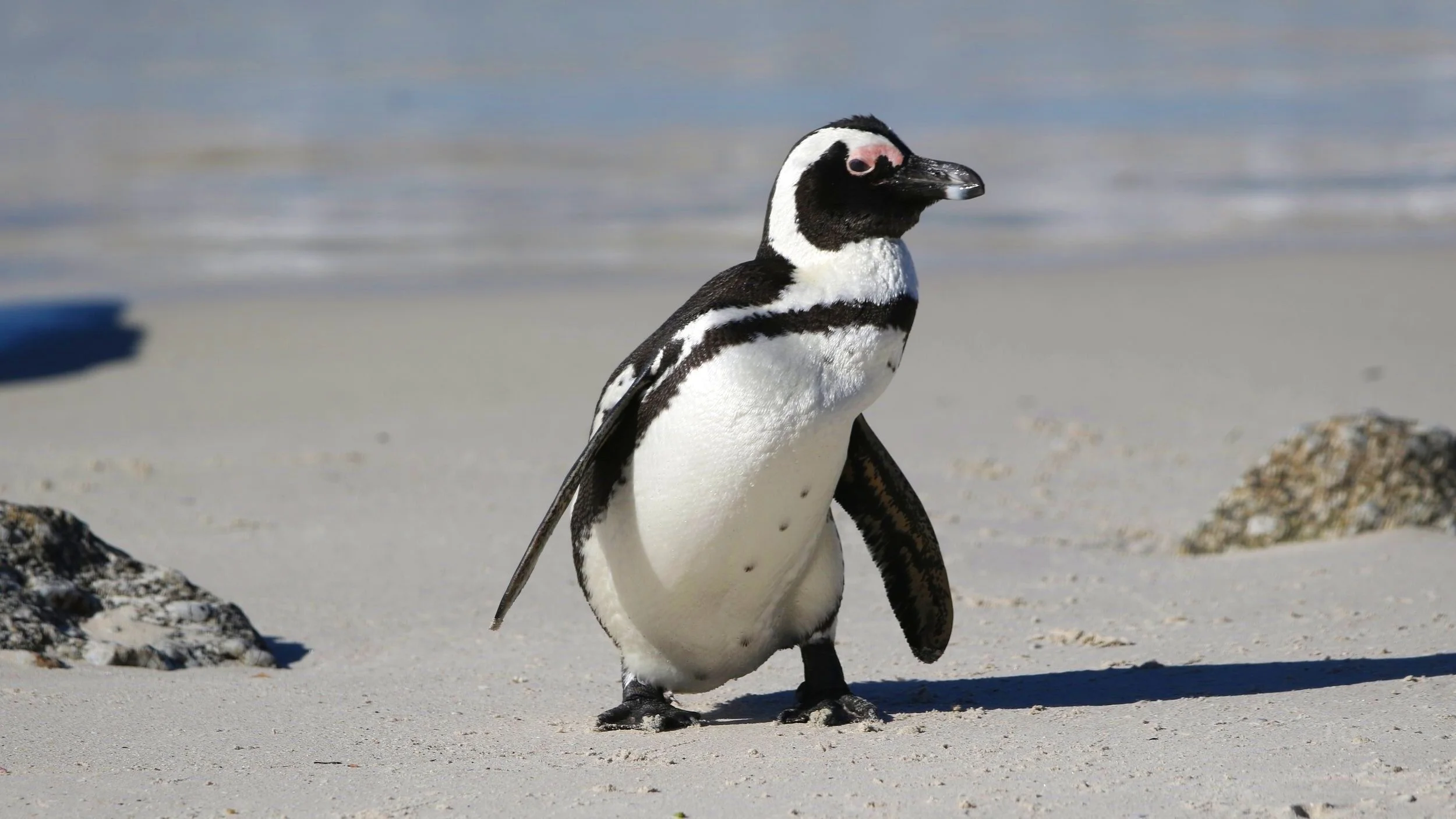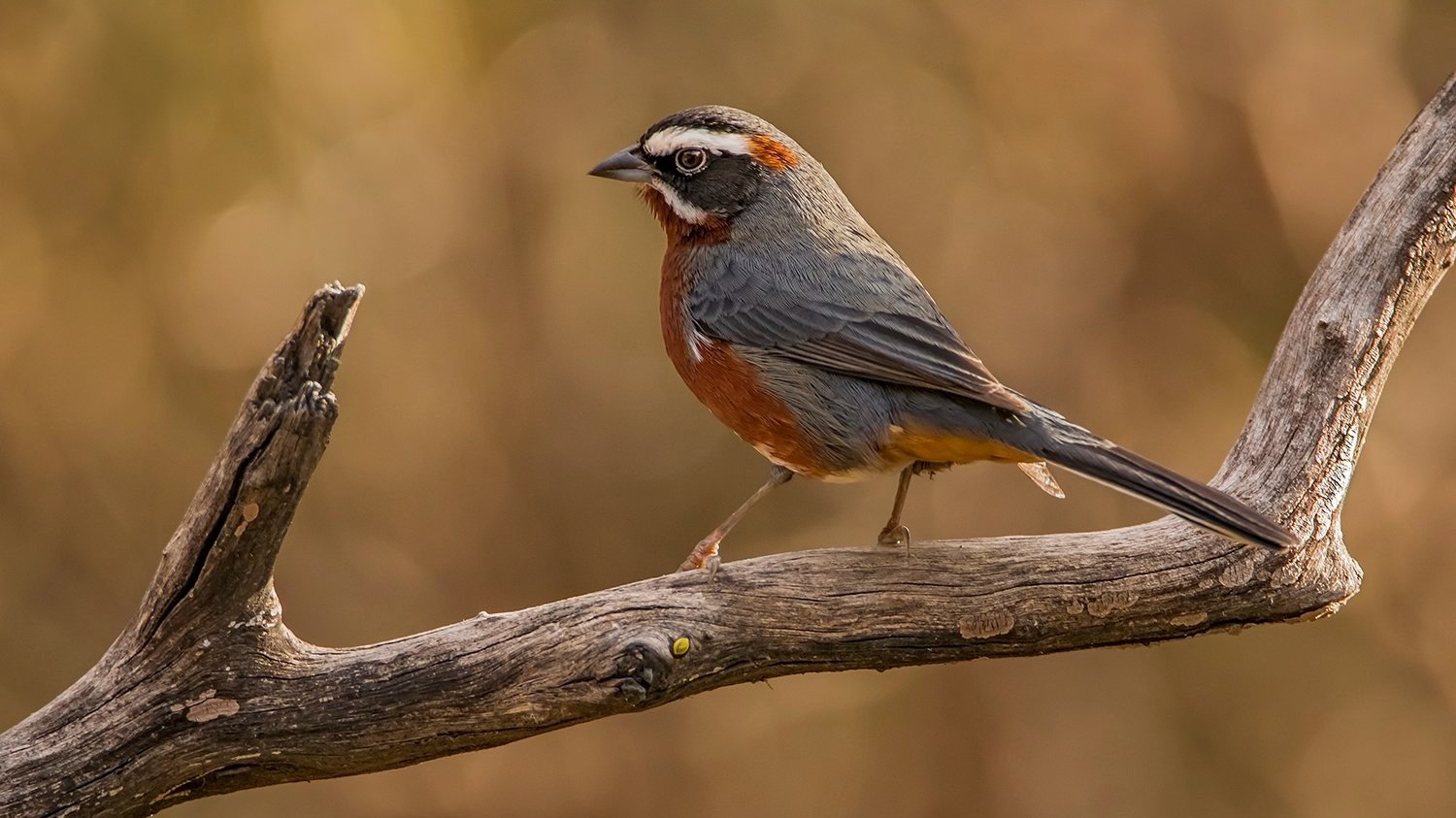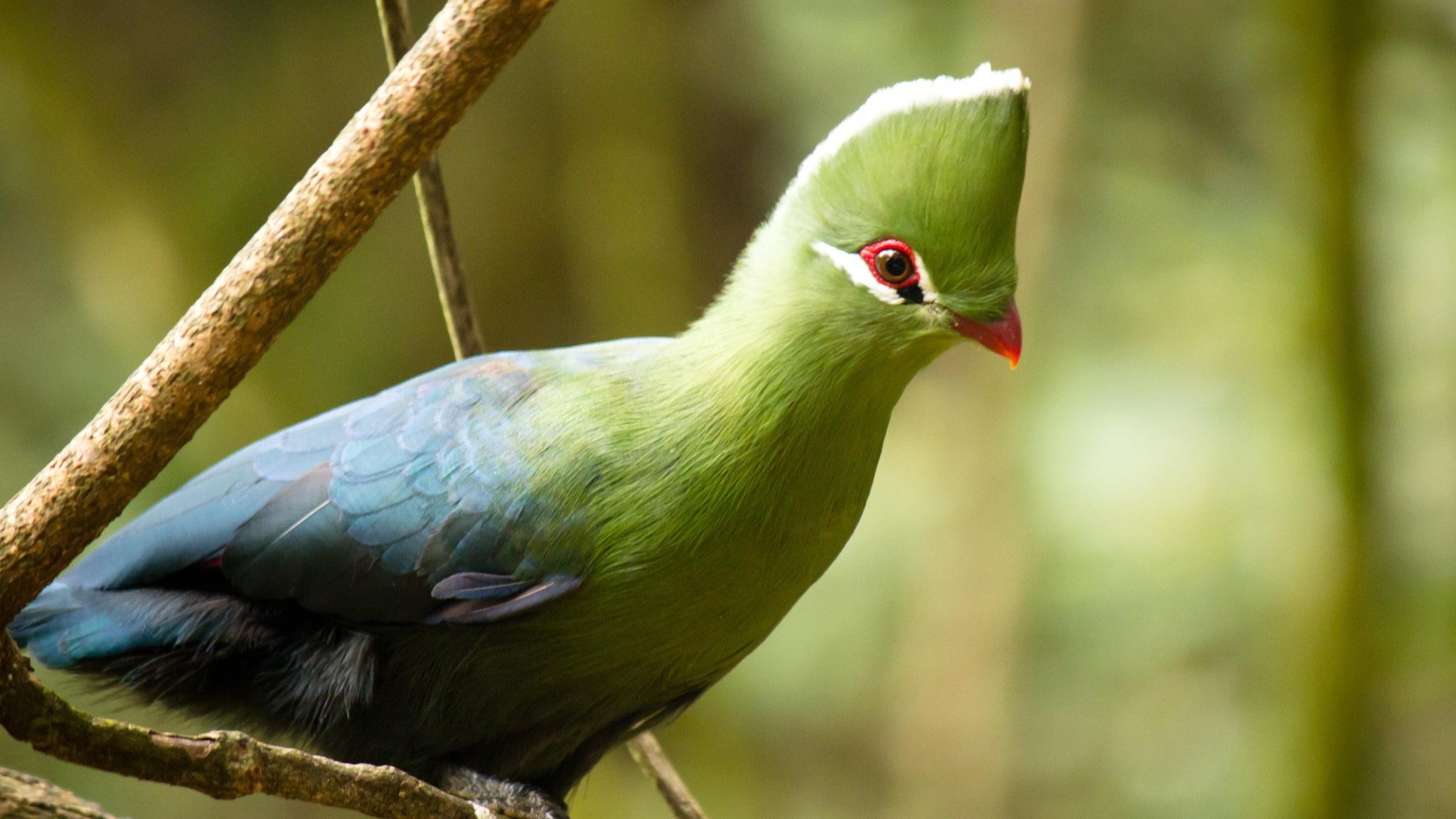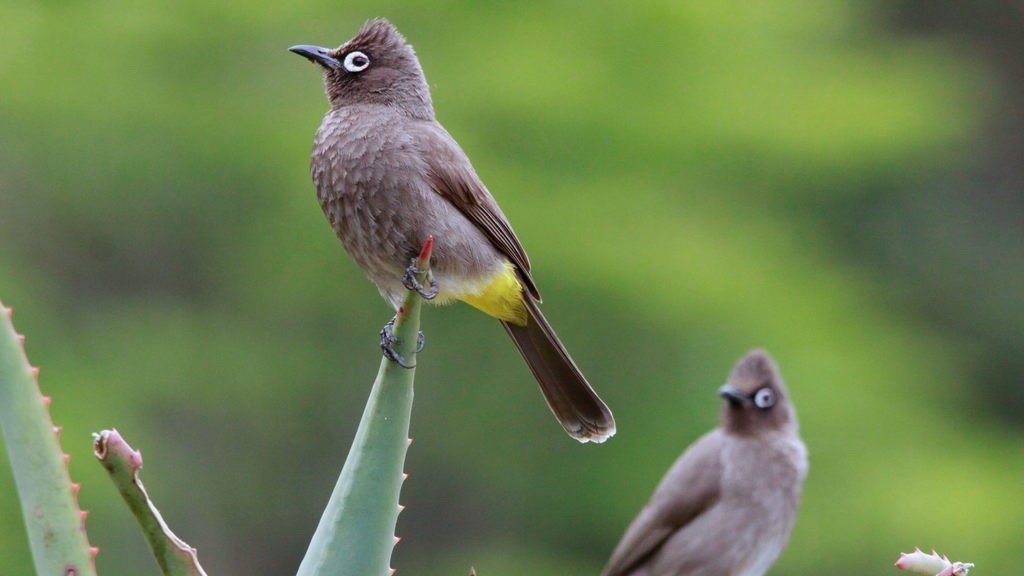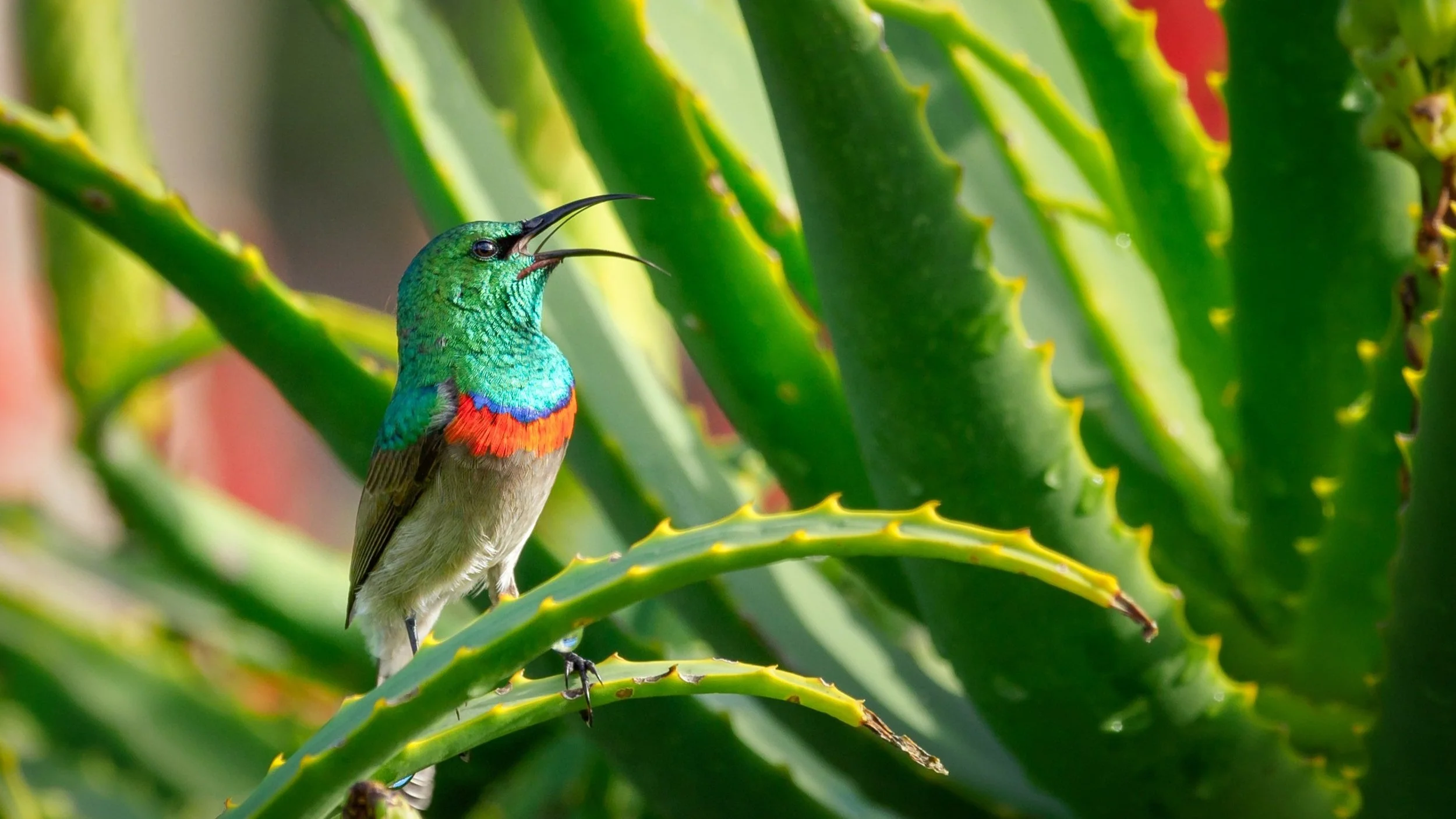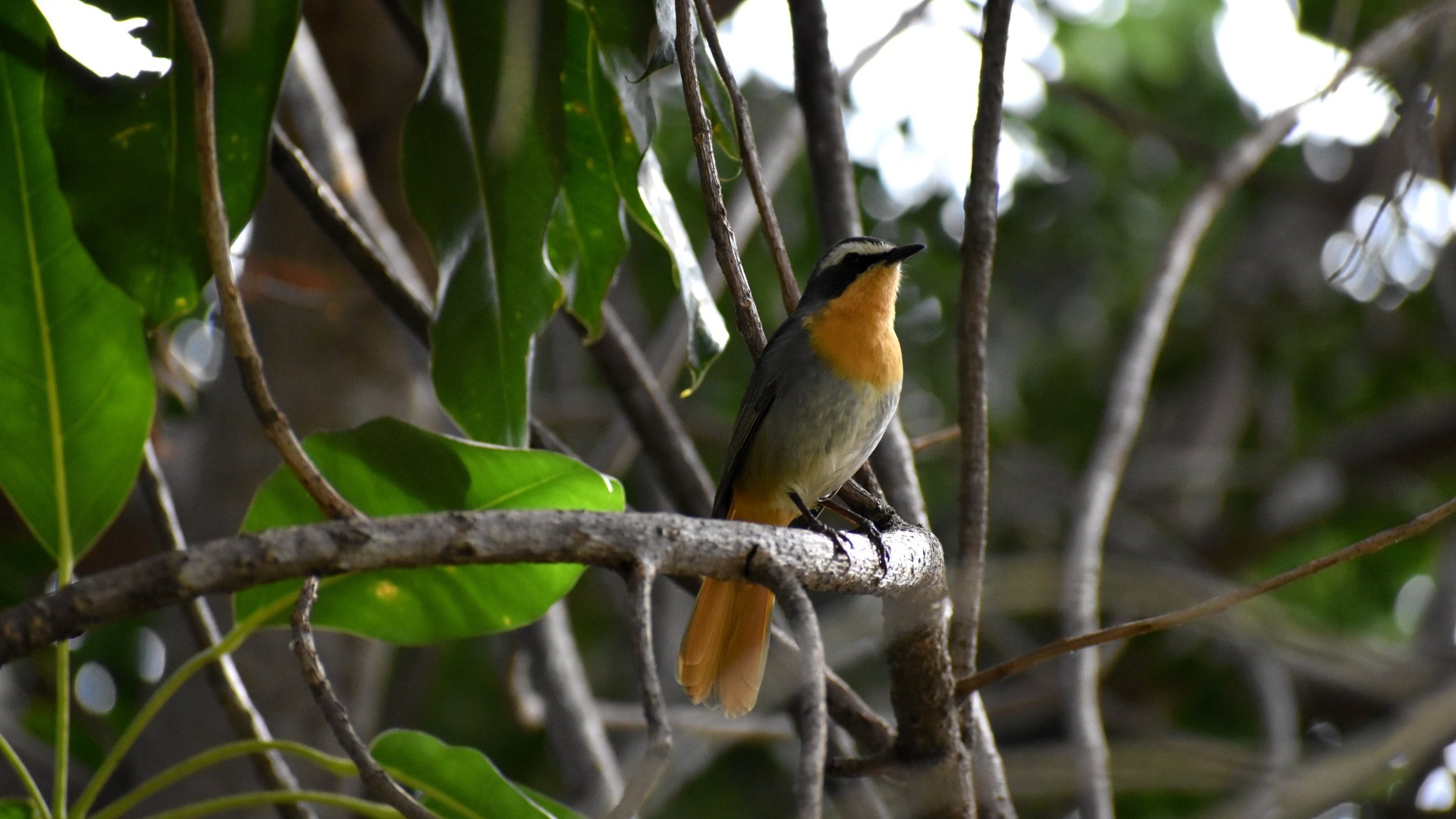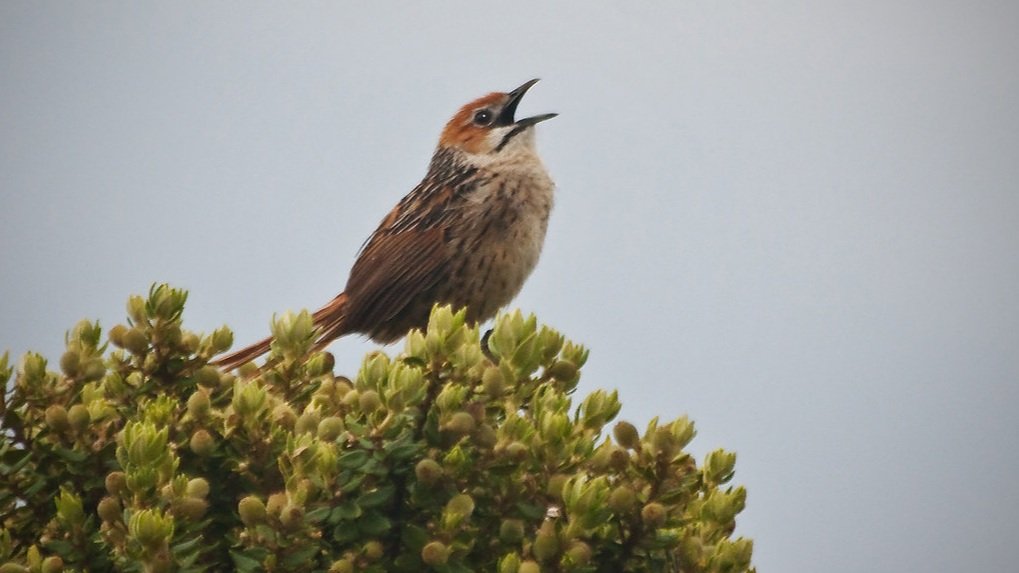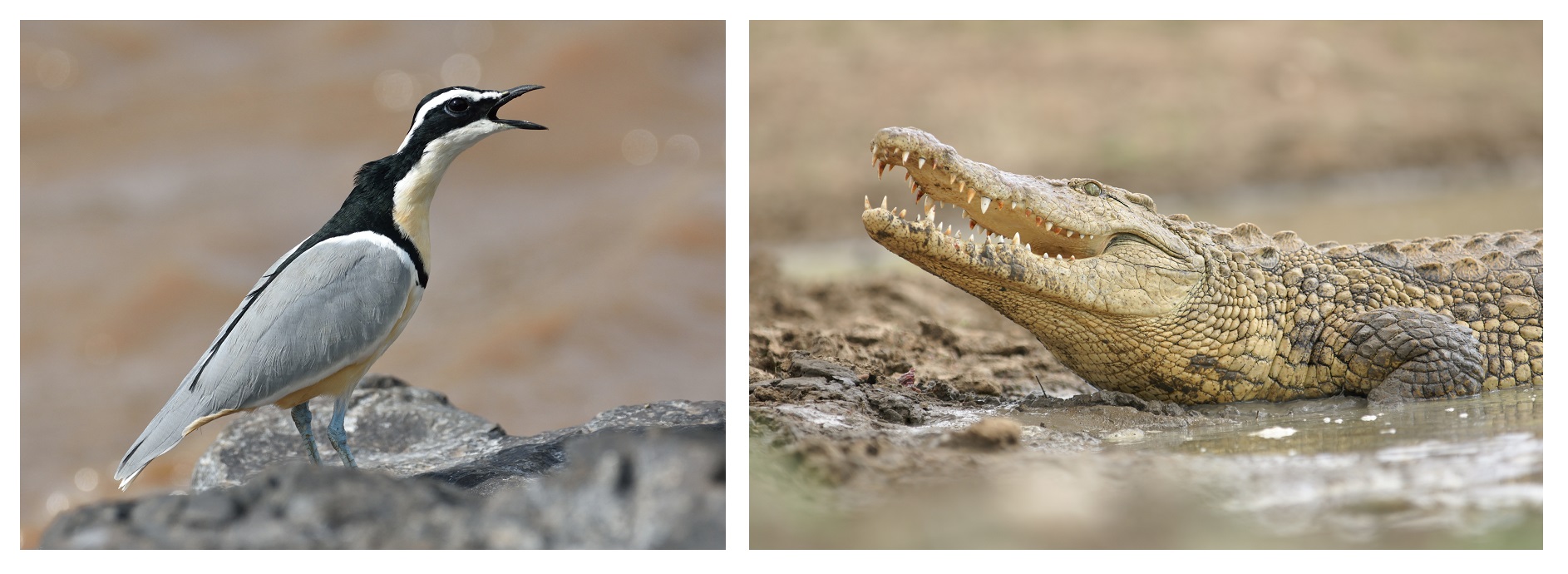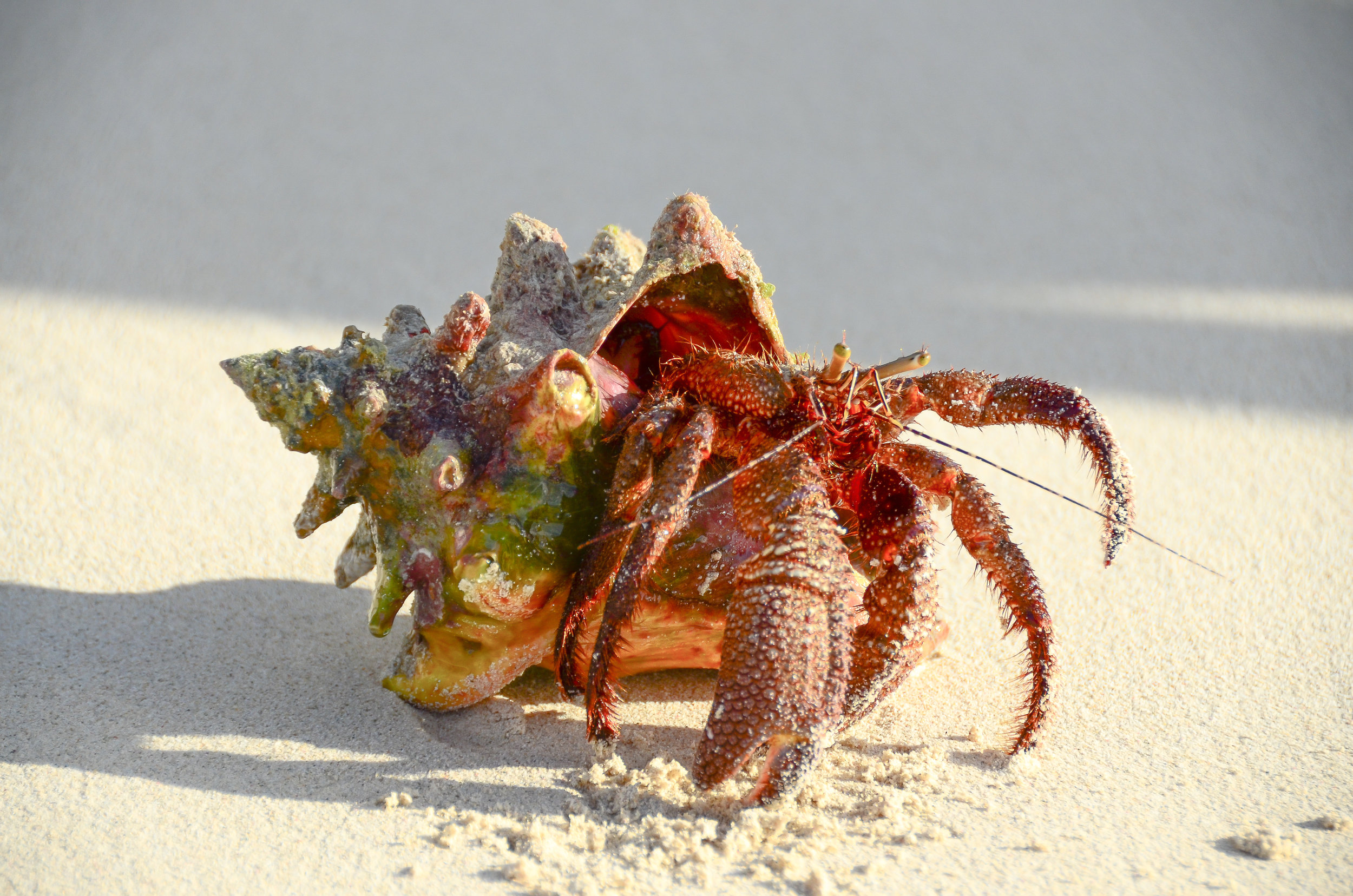Cape Town, nestled at the southern tip of Africa, is a haven for nature enthusiasts and bird lovers alike. With its diverse landscapes, ranging from mountainous regions to coastal habitats, the city provides a rich environment for an impressive array of bird species. Whether you're a seasoned birder or simply have an appreciation for the beauty of these winged creatures, here are the 20 most interesting birds to spot in and around Cape Town.
African Penguin
Image by Leigh Woods
The African Penguin, also known as the "jackass penguin" due to its distinctive braying call, is a charismatic and highly endangered species. Found primarily on the shores of Boulders Beach in Simon's Town, these black and white birds captivate visitors with their playful antics. Watch them waddle along the sandy beaches, taking refreshing dips in the clear turquoise waters as they gracefully swim through the ocean. It's a heartwarming experience to witness these adorable creatures interact with each other, build nests, and care for their young. The African Penguin is a true symbol of Cape Town's unique biodiversity and the importance of conservation efforts.
Cape Sugarbird
Image by Derek Keats
Endemic to South Africa, the Cape Sugarbird is a striking and beautiful bird known for its long, curved bill and its elegant, elongated tail feathers. It can be found in the fynbos-covered slopes of Table Mountain and the surrounding areas. The male displays a vibrant mix of orange, black, and white plumage, making it a sight to behold. These birds are often seen darting between flowering proteas and other fynbos plants, using their specialized brush-tipped tongues to feed on nectar. Their melodious songs and graceful flight patterns add to the enchantment of encountering them in their natural habitat.
Malachite Kingfisher
Photo by Elize Bezuidenhout on Unsplash
The Malachite Kingfisher is a jewel of Cape Town's waterways, known for its vibrant blue and green plumage that gleams in the sunlight. This tiny bird, measuring only about 13 centimeters in length, can be found near rivers, ponds, and wetlands. It perches on branches or reeds, patiently scanning the water for fish and insects. Once its keen eyes spot its prey, the kingfisher dives headfirst into the water with remarkable speed and accuracy. Witnessing this breathtaking hunting technique and the dazzling colors of the Malachite Kingfisher is a true testament to the wonders of nature.
Cape Rockjumper
Image by Sergio Ali
A true master of camouflage, the Cape Rockjumper blends perfectly with the rocky terrain of Cape Town's mountainous regions. With its bright orange plumage, black throat patch, and contrasting white wing patches, this bird stands out against the earthy tones of its surroundings. Spotting the Cape Rockjumper requires some patience and keen observation skills, as it hops and flits from rock to rock in search of insects and small reptiles. Its unique call, a combination of whistles and trills, often serves as a helpful clue to locate these elusive birds. For avid birders, encountering the Cape Rockjumper is a gratifying reward for exploring the rugged landscapes of Cape Town.
African Fish Eagle
Image by Charles J. Sharp
The African Fish Eagle is a majestic bird of prey renowned for its distinctive call, often likened to the iconic sound of an African wilderness. With its striking black and white plumage and a powerful hooked beak, this eagle exudes an aura of strength and grace. Found near freshwater bodies such as rivers, lakes, and estuaries, the African Fish Eagle is a skilled hunter, swooping down from the skies to snatch fish with its sharp talons. Witnessing its dramatic fishing techniques and hearing its haunting call echoing across the water is a captivating experience that showcases nature's raw beauty.
African Black Oystercatcher
Image by Ken and Nyetta
Standing out against the coastal landscapes of Cape Town, the African Black Oystercatcher is a captivating bird with its black plumage and a vibrant red beak. These striking shorebirds are commonly found along the shores, foraging for limpets, mussels, and other shellfish. Watching them probe the sand or pry open shells with their sturdy bills is a sight to behold. The African Black Oystercatcher is not only visually appealing but also holds ecological significance as an indicator species for the health of coastal ecosystems. Observing these birds along the rugged Cape Town coastline offers a glimpse into the delicate balance of nature.
Knysna Turaco
Image by Heinrich Stofberg
While not exclusive to Cape Town, the Knysna Turaco can be spotted in the Kirstenbosch National Botanical Garden. With its emerald green feathers, vibrant crimson wings, and a prominent crest, this bird is a true spectacle. The Knysna Turaco's melodic calls can be heard echoing through the trees as it moves gracefully from branch to branch. Its presence adds a splash of color to the lush vegetation of the garden, making it a sought-after sighting for birdwatchers and nature enthusiasts. Take a moment to appreciate the Knysna Turaco's beauty and immerse yourself in the serenity of Kirstenbosch's tranquil surroundings.
Cape Bulbul
Image by Derek Keats
The Cape Bulbul is a common bird in Cape Town's gardens and parks, known for its beautiful song that resonates through the trees. With its olive-brown plumage, a distinctive crest, and a pale yellow throat, this small bird is a delightful sight. It flits among the branches, gleaning insects and feasting on berries, while filling the air with its melodious melodies. The Cape Bulbul's adaptability to urban environments allows it to thrive in the city's green spaces, offering an accessible opportunity for birdwatchers of all levels to appreciate its cheerful presence and tuneful performances.
Secretarybird
Image by Antony Trivet
Although not commonly seen within the city limits, the Secretarybird can be spotted in the grasslands surrounding Cape Town. This large and distinctive bird of prey stands tall with its long, bare legs and a tuft of elongated feathers on its head. It primarily feeds on snakes, rodents, and other small animals, using its strong legs to stamp and kill its prey. The Secretarybird's unique appearance and hunting techniques make it a captivating species to observe in its natural habitat. Witnessing its graceful stride and powerful strikes is a testament to the remarkable adaptations of birds of prey.
Cape White-eye
Image by Derek Keats
The Cape White-eye is a small and lively bird that frequents gardens, forested areas, and parks in Cape Town. With its bright yellow underparts and a distinct white eye-ring, it adds a splash of color to the surrounding foliage. These energetic birds move in small flocks, exploring trees and shrubs in search of insects, nectar, and fruits. Their cheerful chirps and acrobatic flights make them a delight to observe. Whether in urban or natural settings, encountering the Cape White-eye showcases the resilience and adaptability of birds thriving in Cape Town's diverse ecosystems.
Orange-breasted Sunbird
Image by Gregory "Slobirdr" Smith
Endemic to the fynbos biome of South Africa, the Orange-breasted Sunbird is a true gem of Cape Town's avian population. This striking bird features a vibrant orange chest and metallic green upperparts, making it a dazzling sight against the backdrop of the fynbos vegetation. The males boast long, curved bills and perform impressive aerial displays to attract mates. They feed on the nectar of various flowering plants, their slender bills perfectly adapted for extracting sweet sustenance. Observing the Orange-breasted Sunbird as it flits from flower to flower, displaying its vivid plumage and sipping nectar, offers a glimpse into the intricate relationship between birds and the diverse floral ecosystem of Cape Town.
Cape Canary
Image by Francesco Veronesi
The Cape Canary, also known as the Yellow Canary, is a charming and melodious bird commonly found in gardens and parks throughout Cape Town. With its vibrant yellow plumage, black wings, and a melodic song, this small passerine bird adds a touch of cheer to its surroundings. Cape Canaries are highly adaptable and can thrive in various habitats, from urban areas to more natural environments. Their enchanting songs can often be heard emanating from treetops or dense shrubbery. Listening to their melodious tunes and catching a glimpse of their bright colors brings a sense of joy and tranquility to any outdoor space.
Southern Double-collared Sunbird
Image by Jean van der Meulen
Another captivating sunbird species found in Cape Town is the Southern Double-collared Sunbird. This bird is a true beauty with its metallic green upper parts, a distinct double collar of orange and yellow, and a slender curved bill. These sunbirds are nectar feeders and play a vital role in pollination. They can be observed hovering near flowering shrubs and plants, delicately sipping nectar from the blossoms. Their agile flight patterns and shimmering plumage make them a sight to behold, especially when the sunlight catches their vibrant colors. The Southern Double-collared Sunbird exemplifies the intricate relationship between birds, flowers, and the delicate balance of Cape Town's ecosystems.
Cape Robin-Chat
Photo by Nicole Wreyford on Unsplash
The Cape Robin-Chat is a charismatic bird species known for its striking appearance and melodious song. With its slate-gray upperparts and a distinctive red breast, this robin-like bird stands out in the forested areas of Cape Town. Known for their confidence, Cape Robin-Chats may approach humans in search of insects or even engage in territorial displays. Their melodious songs echo through the trees, creating a soothing ambiance in the natural habitats they inhabit. Encountering a Cape Robin-Chat is a delightful experience, as you witness their vivid colors and hear their enchanting tunes amidst the tranquility of Cape Town's woodlands.
African Hoopoe
Image by Rajukhan Pathan
The African Hoopoe is a unique and eye-catching bird species that can be found in various habitats throughout Cape Town. With its distinctive black-and-white plumage, a long, curved bill, and a distinctive crest, this medium-sized bird is hard to miss. The hoopoe's name comes from its distinctive "hoop-hoop" call, which it emits during its flight. These birds are often seen foraging on the ground, probing the soil with their bills in search of insects and larvae. With their elaborate plumage and quirky behavior, African Hoopoes add a touch of charm and intrigue to the avian diversity of Cape Town.
African Harrier-Hawk
Image by Jenny Varley
The African Harrier-Hawk, also known as the Gymnogene, is a medium-sized bird of prey that can be spotted soaring above the skies of Cape Town. With its broad wings and a distinctive long, double-jointed neck, it possesses remarkable flexibility and agility. This bird is known for its ability to twist and contort its head to access hard-to-reach prey, such as bird nests or small mammals hiding in tree cavities. Its plumage is predominantly gray, complemented by a pale face and striking yellow eyes. Witnessing the African Harrier-Hawk in flight, displaying its aerial prowess, and observing its unique foraging techniques is a testament to the diversity of raptors in Cape Town.
Cape Grassbird
Image by Yolandé Oelsen
The Cape Grassbird is a small, inconspicuous bird that can be found in the fynbos and grassy areas surrounding Cape Town. This elusive species is known for its well-camouflaged plumage, making it difficult to spot amidst the grasses. However, its distinct song, a series of melodious whistles and trills, gives away its presence. The Cape Grassbird primarily feeds on insects and seeds, foraging within the grassy vegetation. Patience and a keen eye are required to catch a glimpse of this well-hidden bird as it moves stealthily through its natural habitat, blending seamlessly with the surrounding grasses.
African Sacred Ibis
Image by Gregoire Dubois
The African Sacred Ibis is a large, wading bird that can be seen foraging in wetlands, grassy areas, and even urban environments throughout Cape Town. With its striking combination of black and white plumage, long curved bill, and characteristic bald head, this bird is hard to miss. African Sacred Ibises are opportunistic feeders, using their long bills to probe the soil for invertebrates, insects, and small vertebrates. They often congregate in large flocks, creating a spectacle as they gracefully navigate the landscape. The presence of the African Sacred Ibis adds an element of grandeur to Cape Town's natural and urban ecosystems.
Pied Kingfisher
Image by Larissa Bakker
The Pied Kingfisher is a fascinating bird that can be found near rivers, lakes, and estuaries in Cape Town. With its contrasting black and white plumage, distinctive crest, and a dagger-like bill, this bird is a master of aerial hunting. Perched on branches or hovering effortlessly over the water, it scans for fish and other aquatic prey. Once its keen eyes spot a target, the Pied Kingfisher dives headfirst into the water with remarkable speed and precision, emerging with its catch securely clutched in its bill. Witnessing these dramatic hunting displays and admiring the striking appearance of the Pied Kingfisher is an awe-inspiring experience.
Greater Flamingo
Photo by Vivek Joshi
Although not native to Cape Town, the Greater Flamingo can occasionally be spotted in coastal wetlands, lagoons, and salt pans in the area. Known for their iconic pink plumage and long, slender necks, these majestic birds create a mesmerizing sight. Whether wading through shallow waters or gracefully taking flight, their presence adds elegance and a touch of exoticism to the landscape. The Greater Flamingo is a social bird, often congregating in large flocks where they engage in synchronized feeding and stunning displays of coordinated flight. Spotting these magnificent creatures in their natural habitat is a testament to the allure of birdwatching in Cape Town.
